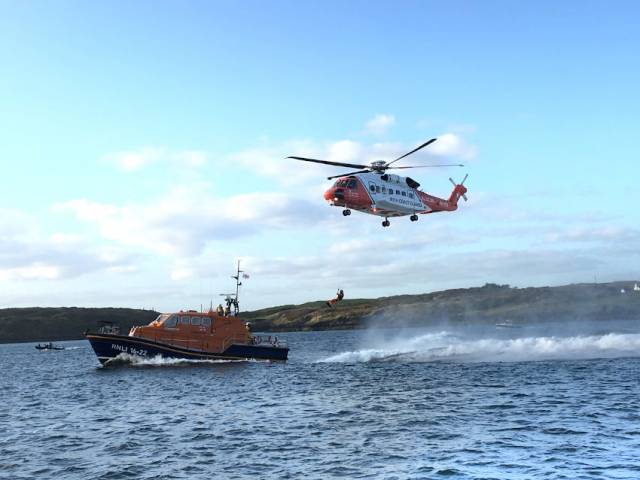A motorboat that became propped up on pot buoys in Baltimore Harbour at the weekend made a direct call for help to the local RNLI’s all-weather lifeboat which was returning to base nearby.
The incident occurred on Saturday evening (7 September) after the Baltimore lifeboat had just completed a training exercise with the Irish Coast Guard’s Waterford-based helicopter Rescue 117.
Lifeboat press officer Kate Callanan said: “The skipper of the motorboat realised immediately that he needed assistance and as he had been watching the lifeboat and helicopter demonstration minutes before, he knew that the quickest way to alert the lifeboat was to call them directly on channel 16 on his VHF.”
Within minutes the all-weather lifeboat — with coxswain Kieran Cotter, mechanic Cathal Cottrell and crew members Emma Lupton, Ronnie Carthy, David Ryan, Jim Griffiths, Ryan O’Mahony and Eoin Ryan — was alongside the 33ft motor vessel.
Another motorboat skippered by former lifeboat crewman Torsten Marten was also nearby at the time, and he was drafted to assist in transferring two lifeboat crew to the casualty vessel rather than having to launch the lifeboat’s Y-boat.
The casualty boat was then secured alongside the all-weather lifeboat and brought to the safety of Baltimore’s North Pier.
Callanan reminded all boaters: “It is vital for anyone going to sea to always carry a means of communication such as a mobile phone or VHF in order to raise the alarm should they require help.”
The callout came on the eve of Baltimore RNLI’s centenary celebration yesterday (Sunday 8 September), at which it named its new Atlantic 85 inshore vessel 100 years to the date since the arrival of its first ever lifeboat.
Elsewhere, Skerries RNLI launched on Thursday night (5 September) to tow a razor fishing boat with two on board that struck rocks off Red Island and damaged its steering.































































